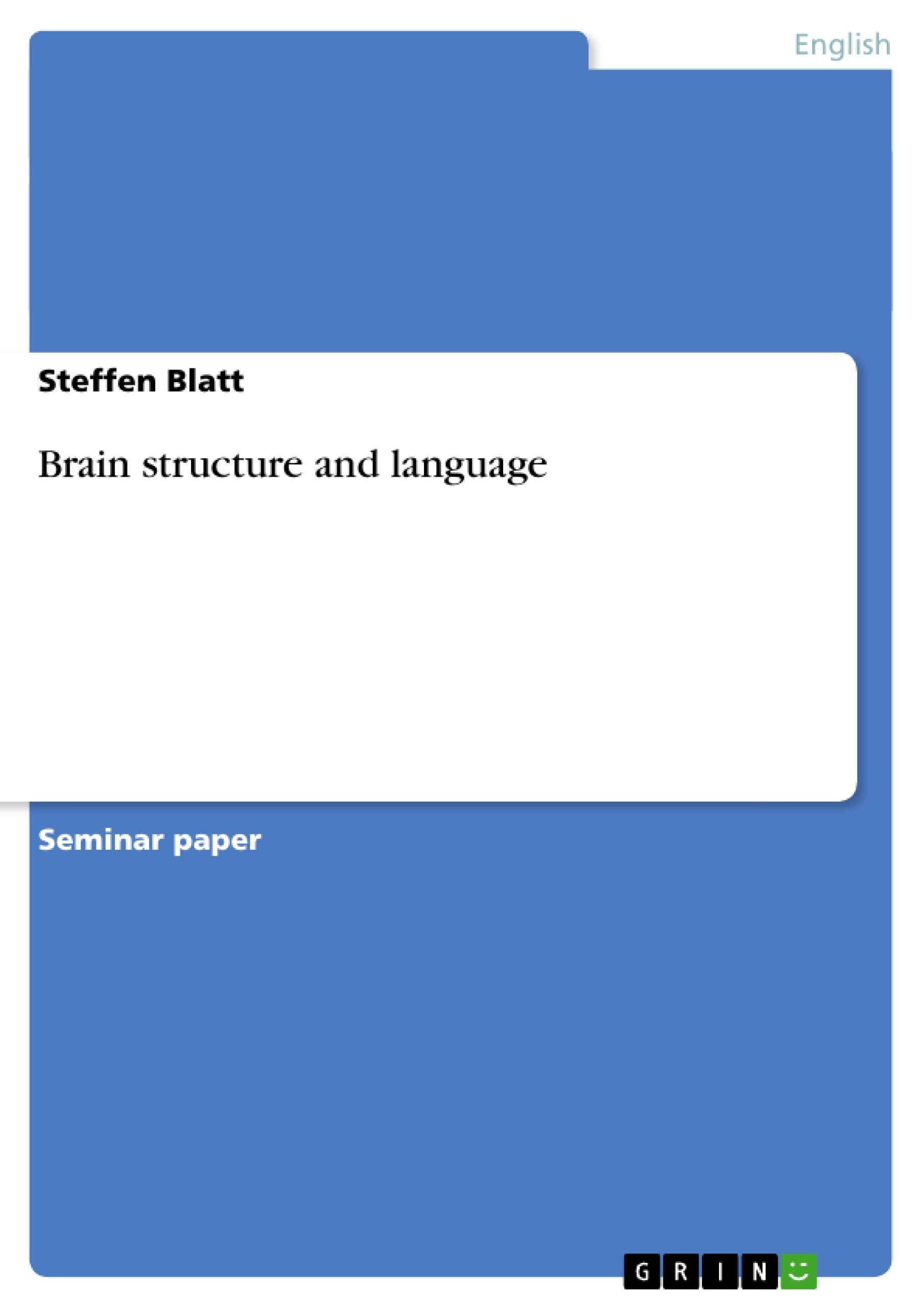The brain is probably the most important part of the body. Its function is to control almost all body movements which also include the vegetative system like the digesting organs or the heart. Of course, it is also responsible for producing and receiving language.
This paper will introduce the main structure of the brain with special attention to those areas of the brain which are involved in language. It starts with the general structure and then explains the different hemispheric functions and the main language areas in the brain. These not only include those which are necessary for speaking because language means more. That is the reason for explaining the auditory and visual pathways from their origin, the ear respectively the eye, all the way to their associated processing areas in the brain, as well.
The second main part of this paper will give a short overview of the investigation methods which were and are used to map the brain and to gain knowledge about how the brain works in correlation with language. This overview reaches from the early attempts of post-mortem examination to the high-tech methods of today neurolinguistics.
Inhaltsverzeichnis (Table of Contents)
- Introduction
- Brain Structure
- General Structure
- Hemispheric Structure and Function
- Main Language Areas in the Brain
- The Auditory System
- The Visual System
- Methods of Investigation
- Early Attempts
- The Wada Test
- The Tachistoscopic Presentation
- The Dichotic Listening Technique
- The CAT-Scan
- The PET-Scan
- MRI and fMRI
- ERP
- Conclusion
Zielsetzung und Themenschwerpunkte (Objectives and Key Themes)
This paper aims to provide a comprehensive overview of the brain's structure, particularly focusing on the areas involved in language processing. It explores the general structure of the brain, delves into the distinct functions of its hemispheres, and examines the key language areas. Additionally, it explores the auditory and visual pathways from their respective origins, the ear and the eye, to their processing areas in the brain.
- The structure and function of the human brain
- The role of different brain areas in language processing
- Methods used to investigate brain-language relationships
- The importance of the auditory and visual systems for language comprehension
- The relationship between brain structure and intelligence
Zusammenfassung der Kapitel (Chapter Summaries)
The first chapter introduces the brain as the most important part of the body, responsible for controlling bodily movements, including language production and reception. It sets the stage for exploring the brain's structure in detail, focusing on language-related areas.
Chapter 2.1 outlines the general structure of the brain, starting with the largest components, the cerebral hemispheres. It highlights the importance of the cerebral cortex for higher intellectual functions and language. The chapter then dives deeper into the subcortical structures and their roles in regulating various bodily functions.
Chapter 2.2 delves into the hemispheric structure and function, emphasizing the unique capabilities of each hemisphere. It explains how both hemispheres communicate through the corpus callosum and other fiber bundles, enabling the exchange of information.
Chapter 2.3 focuses on the main language areas in the brain, highlighting their importance for speaking, understanding, and reading. It clarifies that language is a complex process encompassing more than just speech production.
Chapters 2.4 and 2.5 explore the auditory and visual pathways from the ear and eye to their respective processing areas in the brain, emphasizing their roles in language comprehension.
Chapter 3 provides an overview of the methods used to investigate the brain and its relationship to language. This includes historical methods, such as post-mortem examination, as well as contemporary high-tech approaches used in neurolinguistics.
Schlüsselwörter (Keywords)
This paper focuses on the structure and function of the brain, particularly its role in language processing. Key terms include cerebral cortex, hemispheric specialization, language areas, auditory pathways, visual pathways, neurolinguistics, and methods of brain investigation.
- Citar trabajo
- Steffen Blatt (Autor), 2007, Brain structure and language, Múnich, GRIN Verlag, https://www.grin.com/document/69134



